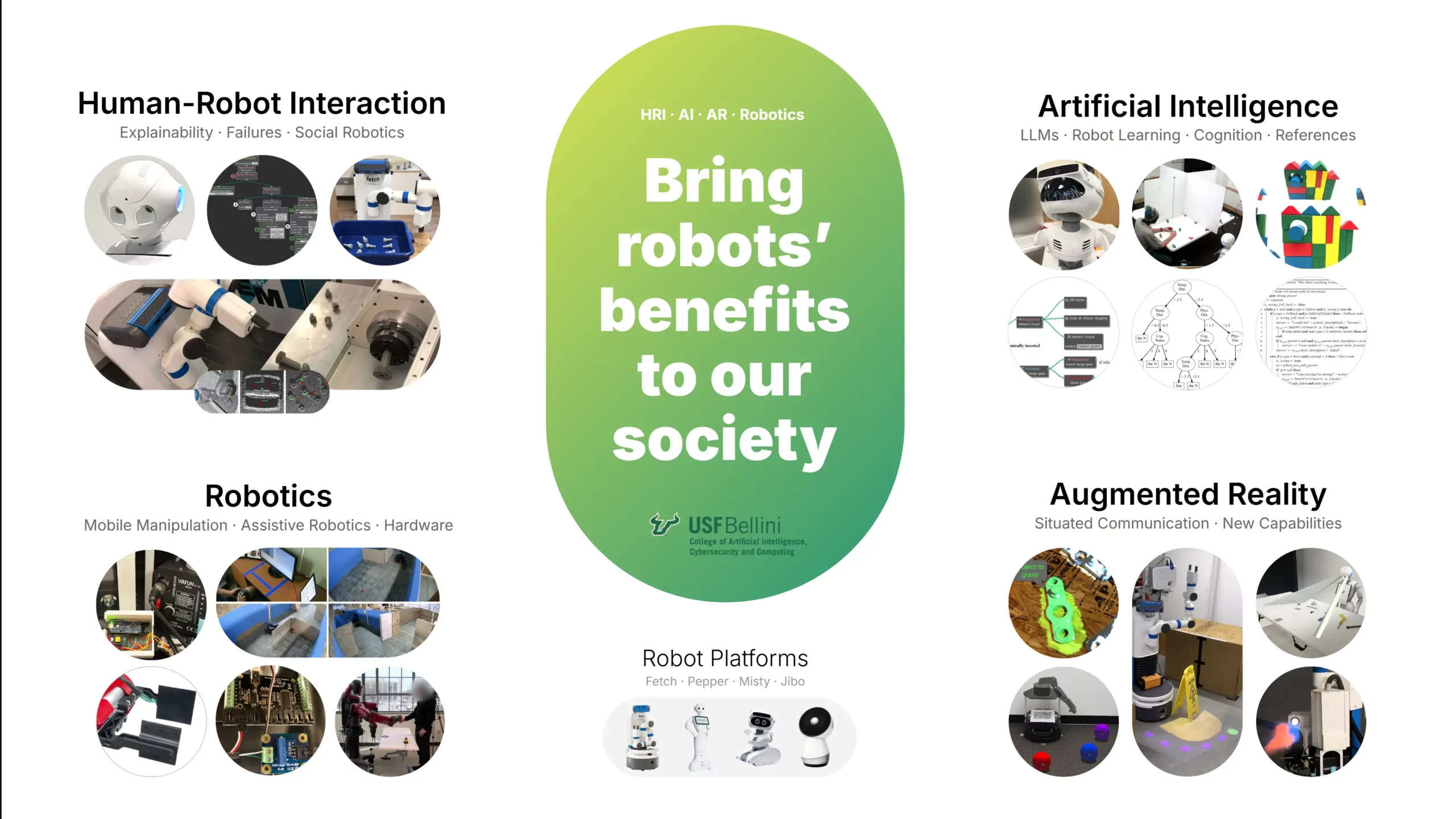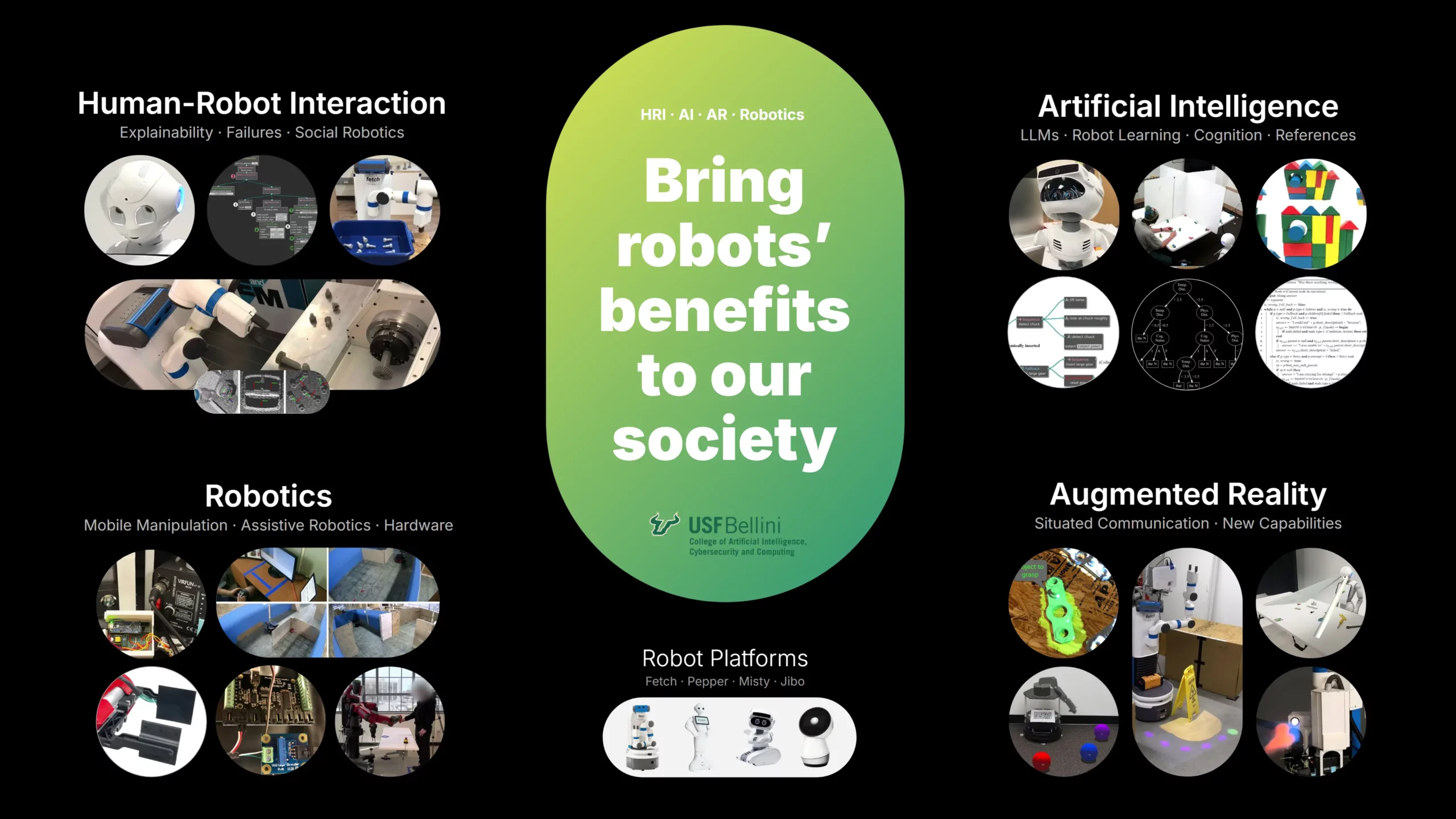June is here, and Summer starts. Welcome, new and old lab members!


Reality, Autonomy, and Robot Experience (RARE) Lab
Prof. Zhao Han leads the RARE lab at the University of South Florida in the Bellini College of Artificial Intelligence, Cybersecurity and Computing.
Mission
Our mission is to solve the grand challenges in human-centered robotics by designing and studying preferred robot interactions and capable robotic systems powered by AI.
Vision
We envision an era of interactive robots that provide superior robot experiences for humans to interact, collaborate, team up, and live with.
News
Learn RARE Lab’s latest research, outreach, and members’ achievements!
We presented RARE Lab’s preliminary works on explainable robot learning and storytelling robot at the top robotics conference, ICRA 2025, in Atlanta. Stay tuned for our full papers and more!
Our interdisciplinary grant, “The Center for Biological and Food Innovations in AI and Robotics for Children’s Nutrition and Health (Bio-FAIRCH),” has been awarded $300,000 for USF Interdisciplinary Center Preparation Grants Full Proposal (ICPGs). Congrats to Dr. Tingting Zhang and all investigators!
RARE Lab’s multimodal storytelling social robot preliminary work was accepted to the ICRA 2025 Workshop on Foundation Models and Neuro-Symbolic AI for Robotics. Congrats to Tammy, Chi, Felix, and Suyog!
RARE Lab’s preliminary work on explaining transformer-based visual-motor policies was accepted to the ICRA 2025 workshop on Human-Centered Robot Learning in the Era of Big Data and Large Models. Congrats, Ammanuel Ergogo!
Research
Research focuses on interdisciplinary human-robot interaction (HRI), involving robotics, AI, augmented reality (AR), cognitive science, and psychology… See Research Overview →
Recent Publications
Introduction to the Special Issue on Artificial Intelligence for Human-Robot Interaction (AI-HRI)















